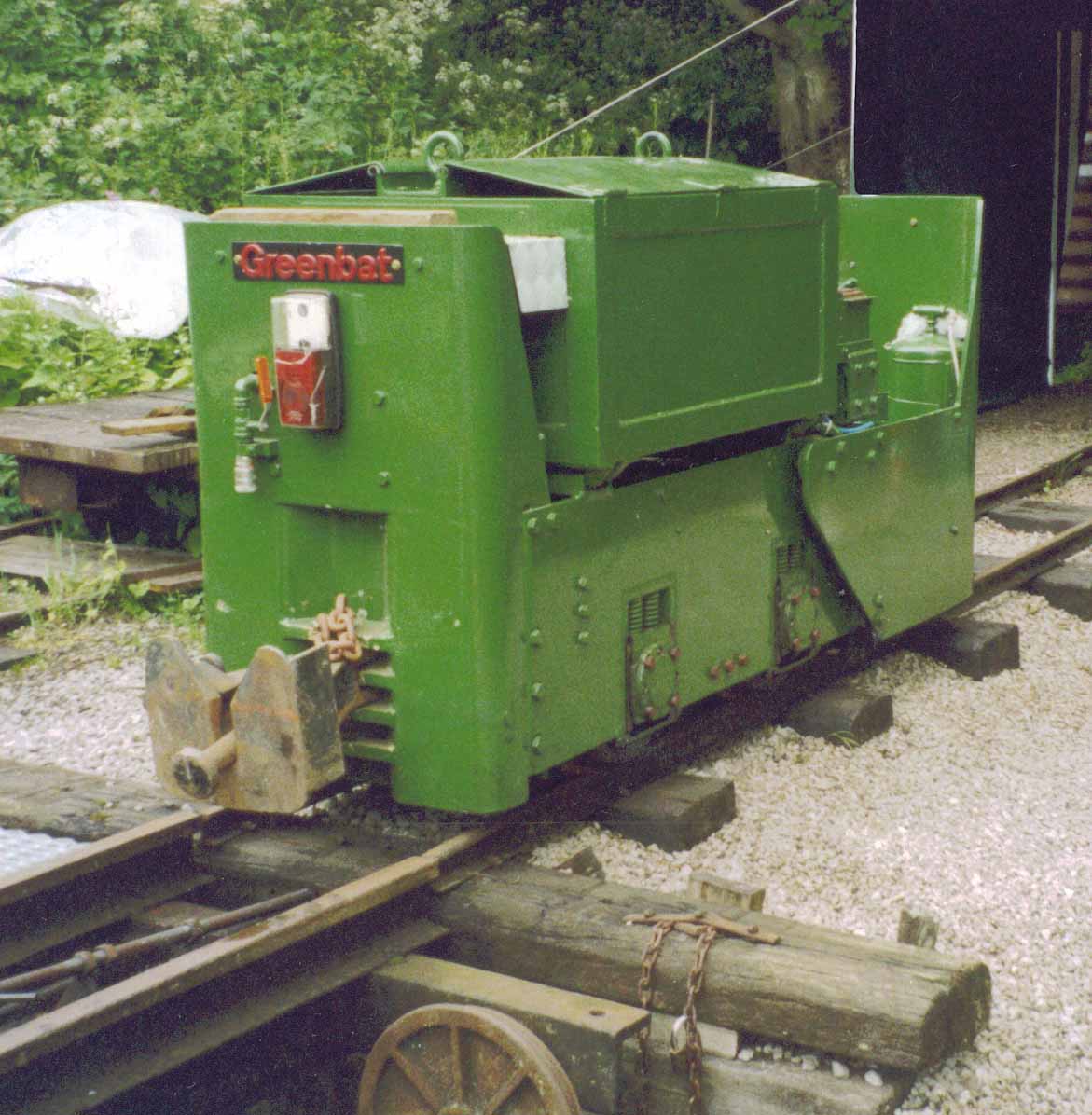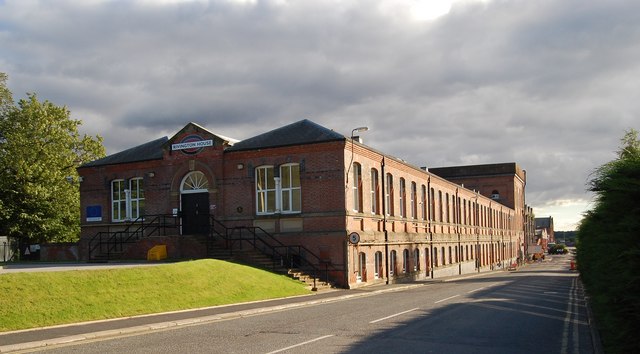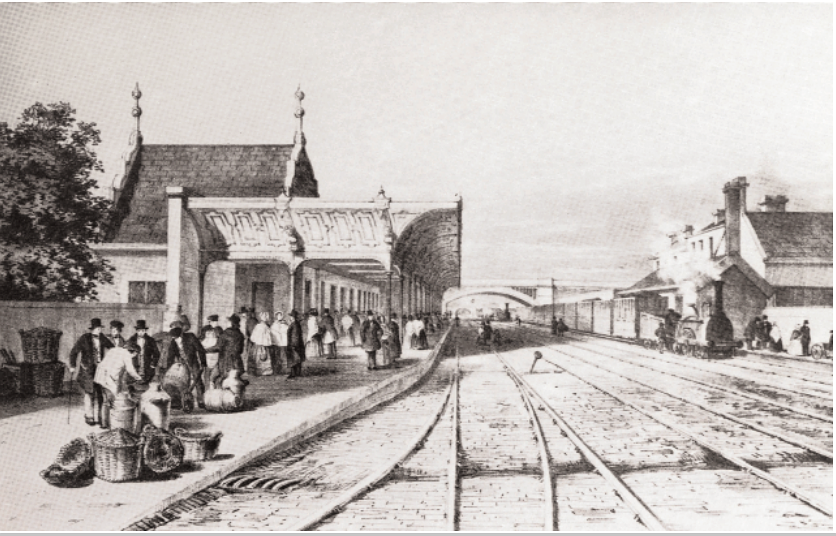|
Crewe Works Railway
The Crewe Works Railway was a narrow gauge internal tramway system serving Crewe Works, the main locomotive construction works of the London and North Western Railway (LNWR) and later the London Midland and Scottish Railway (LMS). The system was first introduced by John Ramsbottom the LNWR Locomotive Superintendent from 1857 and it was a pioneering use of locomotive propelled vehicles within a manufacturing plant. The Crewe system was soon adopted elsewhere. There were four sections to this system built at different times and each in turn significantly altered several times before final abandonment. The four sections were: * The Original LNWR (Old) Works (authorised 17 October 1861) * The LNWR Steel Works (authorised 20 October 1864) * The LNWR Deviation Works (built in the late 1860s) * The Spider Bridge extension to Crewe railway station (built in 1878). Of the above, the first section dating from 1862 was within the original locomotive works first built in 1843 and expand ... [...More Info...] [...Related Items...] OR: [Wikipedia] [Google] [Baidu] |
Crewe
Crewe () is a railway town and civil parish in the unitary authority of Cheshire East in Cheshire, England. The Crewe built-up area had a total population of 75,556 in 2011, which also covers parts of the adjacent civil parishes of Willaston, Shavington cum Gresty and Wistaston. Crewe is perhaps best known as a large railway junction and home to Crewe Works; for many years, it was a major railway engineering facility for manufacturing and overhauling locomotives, but now much reduced in size. From 1946 until 2002, it was also the home of Rolls-Royce motor car production. The Pyms Lane factory on the west of the town now exclusively produces Bentley motor cars. Crewe is north of London, south of Manchester city centre, and south of Liverpool city centre. History Medieval The name derives from an Old Welsh word ''criu'', meaning 'weir' or 'crossing'. The earliest record is in the Domesday Book, where it is written as ''Creu''. Modern Until the Grand Junction Railw ... [...More Info...] [...Related Items...] OR: [Wikipedia] [Google] [Baidu] |
National Railway Museum
The National Railway Museum is a museum in York forming part of the Science Museum Group. The museum tells the story of rail transport in Britain and its impact on society. It is the home of the national collection of historically significant railway vehicles such as LNER Class A4 4468 Mallard, Mallard, GNR Stirling 4-2-2, Stirling Single, LMS Princess Coronation Class 6229 Duchess of Hamilton, Duchess of Hamilton and a Japanese Shinkansen, bullet train. In addition, the National Railway Museum holds a diverse collection of other objects, from a household recipe book used in George Stephenson's house to film showing a "People mover, never-stop railway" developed for the British Empire Exhibition. It has won many awards, including the European Museum of the Year Award in 2001. the museum is about to embark on a major site development. As part of the York Central redevelopment which will divert Leeman Road, the National Railway Museum will be building a new entrance building to c ... [...More Info...] [...Related Items...] OR: [Wikipedia] [Google] [Baidu] |
British Industrial Narrow Gauge Railways
British industrial narrow-gauge railways are narrow-gauge railways in the United Kingdom and the Isle of Man that were primarily built to serve one or more industries. Some offered passenger services for employees or workmen, but they did not run public passenger trains. They are categorized by the primary industry they served. Quarrying and mining Heavy industry Engineering works Power generation Power stations were some of the last regular users of industrial steam locomotives in the United Kingdom, although most of these were standard gauge. However, several power generation facilities used narrow-gauge railways. Refineries Steel works File:Statfold Barn Railway - diesel locomotive (geograph 3911882).jpg, Preserved Shotton steelworks locomotive Zinc smelting Construction industry Contractor depots Many construction contractors maintained depots that included narrow-gauge equipment in store and under repair. While some of these were tempora ... [...More Info...] [...Related Items...] OR: [Wikipedia] [Google] [Baidu] |
Steeple Grange Light Railway
The Steeple Grange Light Railway is a narrow-gauge, heritage railway visitor attraction near Wirksworth in Derbyshire, UK. It uses industrial locomotives and rolling stock from disused mines, quarries, and steelworks around the country. The line The Steeple Grange Light Railway is a , gauge narrow gauge line, built in 1985 on the former Killer's Branch line from Steeple House Junction of the Cromford and High Peak Railway to Middleton Quarry in Derbyshire. The line features a steep 1:27 (3.7 %) gradient incline from the back of the engine shed to the station near Middleton by Wirksworth which has a pathway leading to Main Street. At Dark Lane there is a carriage and wagon shed which houses the railway's coaching stock alongside a few locomotives that are under maintenance and various maintenance wagons. The railway has reached its goal of extending the line up from the Recreation Ground station, towards Lawson's Loop (a runaround siding for trains to pass one another) past t ... [...More Info...] [...Related Items...] OR: [Wikipedia] [Google] [Baidu] |
Horwich Works
Horwich Works was a railway works built in 1886 by the Lancashire and Yorkshire Railway (LYR) in Horwich, near Bolton, in North West England when the company moved from its original works at Miles Platting, Manchester. Buildings Horwich Works was built on of land bought in April 1884 for £36,000. Rivington House, the first of several workshops was long by wide and opened in February 1887. The long brick built workshops had full-height arched windows and were separated by tram and rail tracks. Work to construct the three bay, long by wide, erecting shop began in March 1885. Inside were 20 overhead cranes. An gauge railway, with approximately of track was built to carry materials around the works complex, modelled on a similar system at Crewe Works. Two small 0-4-0 tank locomotives were bought from Beyer, Peacock and Company in 1887 to haul stores trains around the site, and six more were acquired at intervals to 1901. The first of these was bought from Beyer Peacock, bu ... [...More Info...] [...Related Items...] OR: [Wikipedia] [Google] [Baidu] |
Hudswell Clarke
Hudswell, Clarke and Company Limited was an engineering and locomotive building company in Jack Lane, Hunslet, Leeds, West Yorkshire, England. History The company was founded as Hudswell and Clarke in 1860. In 1870 the name was changed to Hudswell, Clarke and Rodgers. There was another change in 1881 to Hudswell, Clarke and Company. The firm became a limited company in 1899. In 1862, soon after the company had been formed, they were given the initial design work on William Hamond Bartholomew's compartment boats for the Aire and Calder Navigation. The choice of the company may have been influenced by the fact that Bartholomew, the chief engineer for the Navigation, and William Clayton, one of the founders of Hudswell and Clarke, both lived on Spencer Place in Leeds. They produced at least one of the prototype Tom Pudding compartments, but did not get the main contract for their production once the design work had been done. As steam locomotive builders, like many of the sm ... [...More Info...] [...Related Items...] OR: [Wikipedia] [Google] [Baidu] |
Great Bridge, West Midlands
Great Bridge is a village in the Sandwell, Metropolitan Borough of Sandwell. It is situated in Tipton, near the border of West Bromwich, and it is within the metropolitan county of the West Midlands (county), West Midlands. Origins and history The place name, ''Great Bridge'' comes from Old English 'grēot' (grit or gravelly - meaning a stream with a gravelly bed), with the later addition of 'Bridge' - when a bridge was first built over the stream. There are several watercourses in England with the name 'Greet', all from this origin. The stream is thought to be the Oldbury, West Midlands, Oldbury arm of the River Tame, West Midlands, River Tame, known to the Anglo-Saxons, early English in this area as 'grēot' (Greets Green also gets its name from the watercourse). For most of the 20th century Great Bridge was the home of numerous factories (including an ice cream factory opened by Italian immigrant Giuseppe Bonaccorsi) and foundries. However, by the end of the 1990s most of the ... [...More Info...] [...Related Items...] OR: [Wikipedia] [Google] [Baidu] |
Francis Webb (engineer)
Francis William Webb (21 May 1836 – 4 June 1906) was an English railway engineer, responsible for the design and manufacture of locomotives for the London and North Western Railway (LNWR). Webb was born in Tixall Rectory, near Stafford, the second son of William Webb, Rector of Tixall. Career Crewe Works Showing early interest in mechanical engineering, on 11 August 1851 at the age of fifteen he was articled as a pupil of Francis Trevithick at Crewe Works.Griffiths, p.51 Webb joined the drawing office in 1856, at the end of his training. He became Chief Draughtsman on 1 March 1859. On 1 September 1861 he was appointed Works Manager at Crewe and Chief Assistant to John Ramsbottom. Whilst Works Manager Webb was responsible for the installation of Bessemer converters and the start of steel production at Crewe. Bolton Iron and Steel Company In July 1866 Webb resigned from the LNWR and moved to the Bolton Iron and Steel Co. as the manager. It has been suggested that ... [...More Info...] [...Related Items...] OR: [Wikipedia] [Google] [Baidu] |
York
York is a cathedral city with Roman origins, sited at the confluence of the rivers Ouse and Foss in North Yorkshire, England. It is the historic county town of Yorkshire. The city has many historic buildings and other structures, such as a minster, castle, and city walls. It is the largest settlement and the administrative centre of the wider City of York district. The city was founded under the name of Eboracum in 71 AD. It then became the capital of the Roman province of Britannia Inferior, and later of the kingdoms of Deira, Northumbria, and Scandinavian York. In the Middle Ages, it became the northern England ecclesiastical province's centre, and grew as a wool-trading centre. In the 19th century, it became a major railway network hub and confectionery manufacturing centre. During the Second World War, part of the Baedeker Blitz bombed the city; it was less affected by the war than other northern cities, with several historic buildings being gutted and restore ... [...More Info...] [...Related Items...] OR: [Wikipedia] [Google] [Baidu] |
Crewe Railway Station
Crewe railway station is a railway station in Crewe, Cheshire, England. It opened in 1837 and is one of the most historically significant railway stations in the world.Guardian newspaper article, ''The beauty of Crewe'' (6 December 2005). Retrieval Date: 10 August 2007. Crewe station is a major junction on the and serves as a rail gateway for . It is 158 miles north of |
England
England is a country that is part of the United Kingdom. It shares land borders with Wales to its west and Scotland to its north. The Irish Sea lies northwest and the Celtic Sea to the southwest. It is separated from continental Europe by the North Sea to the east and the English Channel to the south. The country covers five-eighths of the island of Great Britain, which lies in the North Atlantic, and includes over 100 smaller islands, such as the Isles of Scilly and the Isle of Wight. The area now called England was first inhabited by modern humans during the Upper Paleolithic period, but takes its name from the Angles, a Germanic tribe deriving its name from the Anglia peninsula, who settled during the 5th and 6th centuries. England became a unified state in the 10th century and has had a significant cultural and legal impact on the wider world since the Age of Discovery, which began during the 15th century. The English language, the Anglican Church, and Engli ... [...More Info...] [...Related Items...] OR: [Wikipedia] [Google] [Baidu] |
John Ramsbottom (engineer)
John Ramsbottom (11 September 1814 – 20 May 1897) was an English mechanical engineer. Born in Todmorden, then on the county border of Yorkshire and Lancashire. Ramsbottom was the son of a steam cotton mill owner. He learned about steam engines, rebuilding his father's and also invented the weft fork (this has also been attributed to James Bullough) that enabled looms to be run at high speed. He also created many inventions for railways but his main legacy is the split metal piston ring, which he invented and later perfected. Virtually all reciprocating engines continue to use these today. Career In 1839 Ramsbottom joined Sharp, Roberts and Company of Manchester who made both industrial stationary engines and steam locomotives, and learned of the latter. He was recommended by Charles Beyer in 1842 to become locomotive superintendent of the Manchester and Birmingham Railway (M&BR). In 1846 the M&BR merged and became the London and North Western Railway (LNWR), and Ramsb ... [...More Info...] [...Related Items...] OR: [Wikipedia] [Google] [Baidu] |








_(Heat_Engines%2C_1913).jpg)